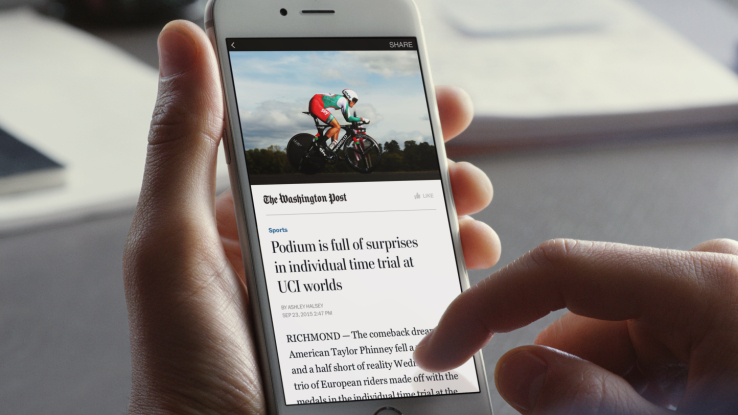

Facebook’s Instant Articles were always a bad deal for news outlets. While quick to load so they drove more readers, the hosted-on-Facebook mobile web format sterilized the design of publishers and severely limited how many ads and other business-critical units they could display. Publishers need paying subscribers, event attendees and loyal daily readers, but they traded those for preferred status and referral traffic from Facebook because if they didn’t, their competitors would.
Now Facebook is cutting publishers a slightly better arrangement, allowing them to put a few more ads in each Instant Article. Ads can now appear every 250 words, instead of every 350.
This is one of the first launches out of Facebook’s new Journalism Project, which sees it trying to work more closely with publishers as it’s quickly become one of their top sources of traffic, and is also absorbing many of the ad dollars that used to go to them.
To Facebook’s credit, it’s been throwing the news business some bones, but Instant Articles still feel unfair.
Here’s the list of initiatives the Journalism Project promised:
- Story packages that bundle multiple articles
- Investments in local news
- Subscription trials that let users sign up with their Facebook payment info
- Facebook + publisher team hackathons
- Facebook journalism training courses for reporters, such as how to use Live
- Ability to designate non-admins as contributors who can broadcast Live from a Page
- Bringing the Live video API’s capabilities to user profiles
- Free CrowdTangle access
- Expanded partnership with First Draft Partner Network for finding eyewitnesses
- Public service announcements promoting news literacy
- Additional features to fight fake news
In 2016, Facebook also allowed sites to extend their directly sold ad campaigns to Instant Articles and keep all the revenue, show and distinguish sponsored content, have more control over their posts’ style, show video and carousel ad formats, allow recirculation through horizontal swiping to reveal more articles by the publisher and its testing email list and Page Like sign-up units.

Yet Facebook is still the one that benefits most from Instant Articles. Fast-loading content hosted within the News Feed means there are fewer reasons for users to leave the app, which would mean they’d stop seeing Facebook’s ads. While the social network touts the clean reading experience of Instant Articles, that’s afforded by the loss of identity for the publishers.
If Facebook wanted to be true partners with the news biz, they’d lift restrictions on anything that doesn’t seriously slow down loading times of Instant Articles, and let publishers choose how they want to handle monetization, circulation and sign-ups. Let the market reward or punish those who show fewer or too many ads. But even with today’s change, Facebook has too heavy a hand around the publishers’ throats.
Here’s my rant on how Facebook and Twitter are turning publishers into interchangeable ghostwriters — dumb content in the smart pipes of the social networks

